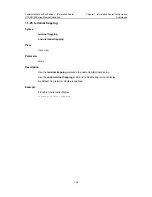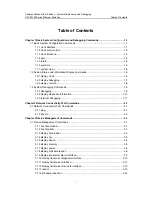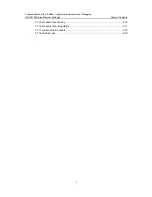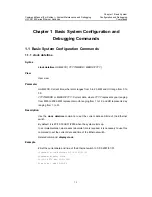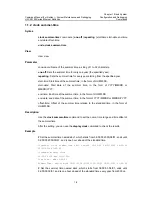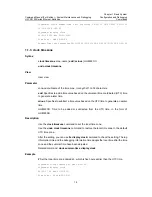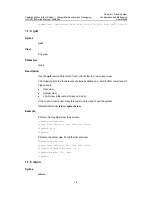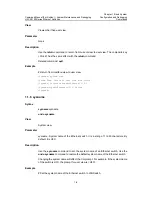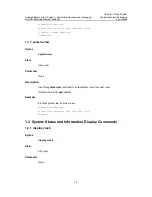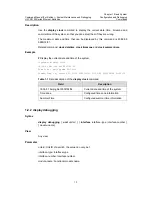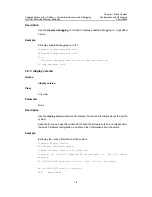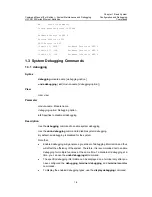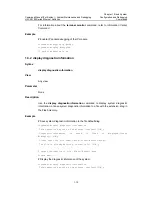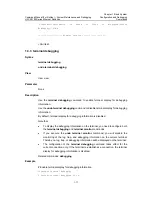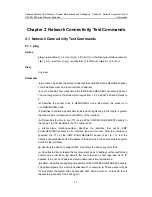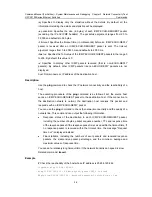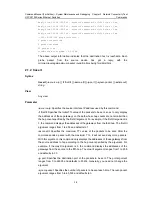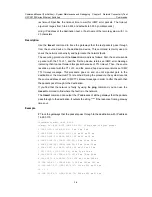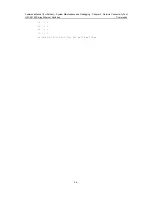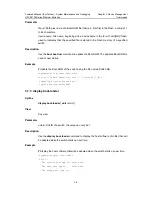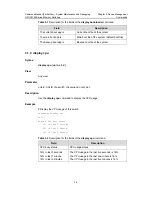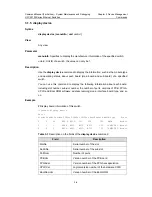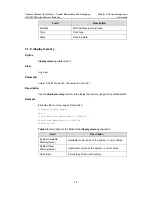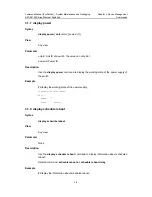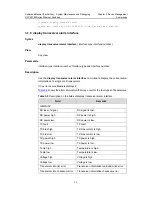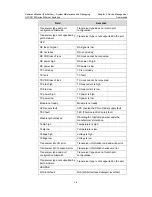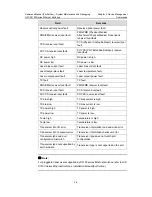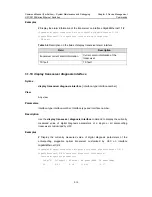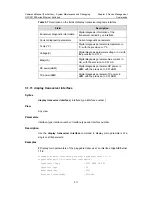
Command Manual (For Soliton) – System Maintenance and Debugging
H3C S3100 Series Ethernet Switches
Chapter 2 Network Connectivity Test
Commands
2-1
Chapter 2 Network Connectivity Test Commands
2.1 Network Connectivity Test Commands
2.1.1 ping
Syntax
ping
[ -
a
ip-address
] [
-c
count
] [
-d
] [
-f
] [
-h
ttl
] [
-i
interface-type interface-number
]
[
ip
] [
-n
] [
- p
pattern
] [
-q
] [
-s
packetsize
] [
-t
timeout
] [
-tos
tos
] [
-v
]
host
View
Any view
Parameter
-a
ip
-
address
: Specifies the source IP address to send ICMP ECHO-REQUEST packet.
This IP address must be a local interface IP address.
-c count
: Specifies how many times the ICMP ECHO-REQUEST packet will be sent.
The
count
argument is the times, which ranges from 1 to 4,294,967,295 and defaults to
5.
-d
: Specifies the socket to be in DEBUGGING mode. By default, the socket is in
non-DEBUGGING mode.
-f
: Specifies to discard a packet directly instead of fragmenting it if its length is greater
than the maximum transmission unit (MTU) of the interface.
-h
ttl
: Specifies the time to live (TTL) value of the ICMP ECHO-REQUEST packets in
the range 1 to 255. By default, the TTL value is 255.
-i
interface-type interface-number
: Specifies the interface that sends ICMP
ECHO-REQUEST packets by its interface type and number. After the interface is
specified, the TTL of the ICMP ECHO-REQUEST packet is set to 1 to test the
directly-connected device (the IP address of the device is in the same network segment
as that of the interface).
ip
: Specifies the device to support IPv4. By default, the device supports IPv4.
-n
: Specifies to directly regard the
host
argument as an IP address without performing
domain name resolution. By default, the
host
argument is first regarded as an IP
address; if it is not an IP address, domain name resolution is performed.
-p pattern
: Specifies the padding byte pattern of the ICMP ECHO-REQUEST packets.
The
pattern
argument is a byte in hexadecimal. For example,
-p
ff fills a packet with all
ffs. By default, the system fills a packet with 0x01, 0x02, and so on, until 0x09; then it
repeats this procedure from 0x01 again.

